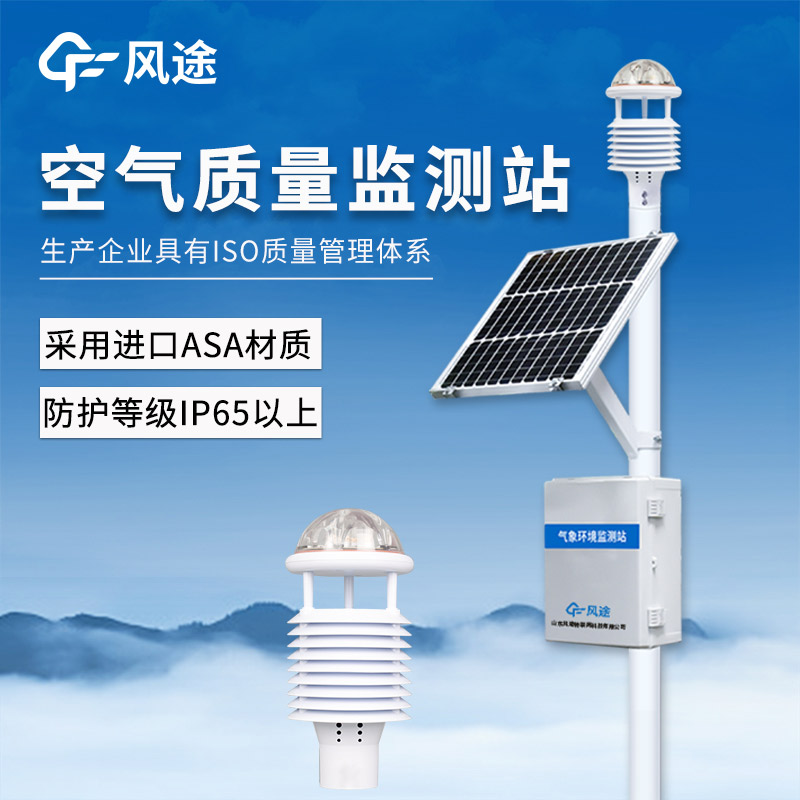Tianyi Sensor IOT Technology Co., Ltd
Sales Manager:Ms. Emily Wang
Cel,Whatsapp,Wechat:+86 15898932201
Email:info@fengtutec.com
Add:No. 155 Optoelectronic Industry Accelerator, Gaoxin District, Weifang, Shandong, China

Sales Manager:Ms. Emily Wang
Cel,Whatsapp,Wechat:+86 15898932201
Email:info@fengtutec.com
Add:No. 155 Optoelectronic Industry Accelerator, Gaoxin District, Weifang, Shandong, China
time:2025-09-04 09:03:08 source:Weather Station viewed:151 time
The operation of air quality monitoring stations relies on a comprehensive grid-based environmental supervision system. This system takes towns, communities (and villages) in cities as basic units, and divides them into air pollution prevention and control management grids according to different levels. Within these grids, air quality monitoring stations centered on sensor technology are established through the large-scale and high-density deployment of monitoring points, enabling full coverage of all grid areas in the city.
These monitoring stations can track the dynamic changes and trends of major pollutants in each grid in real time, and accurately reflect the actual pollution situation in the area. In case of abnormal pollution emissions, the system can quickly detect and automatically issue an alarm, forming an all-round air monitoring network. These monitoring stations can be used in conjunction with the existing standard air quality stations. By superimposing, comparing, analyzing and calibrating the two sets of monitoring data, high-density and high-frequency monitoring data on air pollutant concentrations covering the entire city can be obtained.
With the help of a back-end data analysis platform based on GIS technology, staff can screen, calibrate and statistically analyze the monitoring data, and draw dynamic charts, so as to grasp the temporal and spatial variation trends of atmospheric pollutant concentrations in urban areas. This process not only effectively supervises pollution sources, but also provides direct and reliable basis for environmental law enforcement and decision-making.
In terms of equipment, the supporting miniaturized ambient air quality monitors are cost-effective devices designed for real-time and accurate monitoring of outdoor air pollutants. They adopt a pump-suction sampling method and integrate components such as electrochemical gas sensors and meteorological sensors. These monitors can automatically complete air monitoring, providing solid data support for the grid-based monitoring platform. Moreover, they can calibrate data according to on-site actual conditions to ensure data traceability, making them suitable for monitoring scenarios such as urban atmospheric environment, enterprise environment, and unorganized emission of polluting gases in factory areas.

Life detection device is an emergency rescue equipment that detects and locates buried survivors using audio and video probes. This device can capture sounds such as shouts and groans emitted by trapped individuals and is used in search and rescue operations at disaster sites such as earthquakes and landslides....
The standout advantage of the Portable Weather Station is its "portability," a feature directly reflected in its name. Compared with traditional fixed meteorological monitoring equipment, it has a significantly smaller size and lighter weight, with its overall design fully considering the...
The FT-WQX8B Photovoltaic Weather Station is a professional environmental monitoring device developed and manufactured by Fengtu Technology, a company specializing in the R&D of micro weather stations and meteorological environment solutions. With a complete industrial chain and technical team,...
In outdoor natural settings such as dense forests, mountain streams, vast rivers, lakes and seas, and around rushing waterfalls, people often feel the air is exceptionally fresh. The key reason behind this is that the air in these places contains a sufficient amount of negative oxygen ions. Essentia...